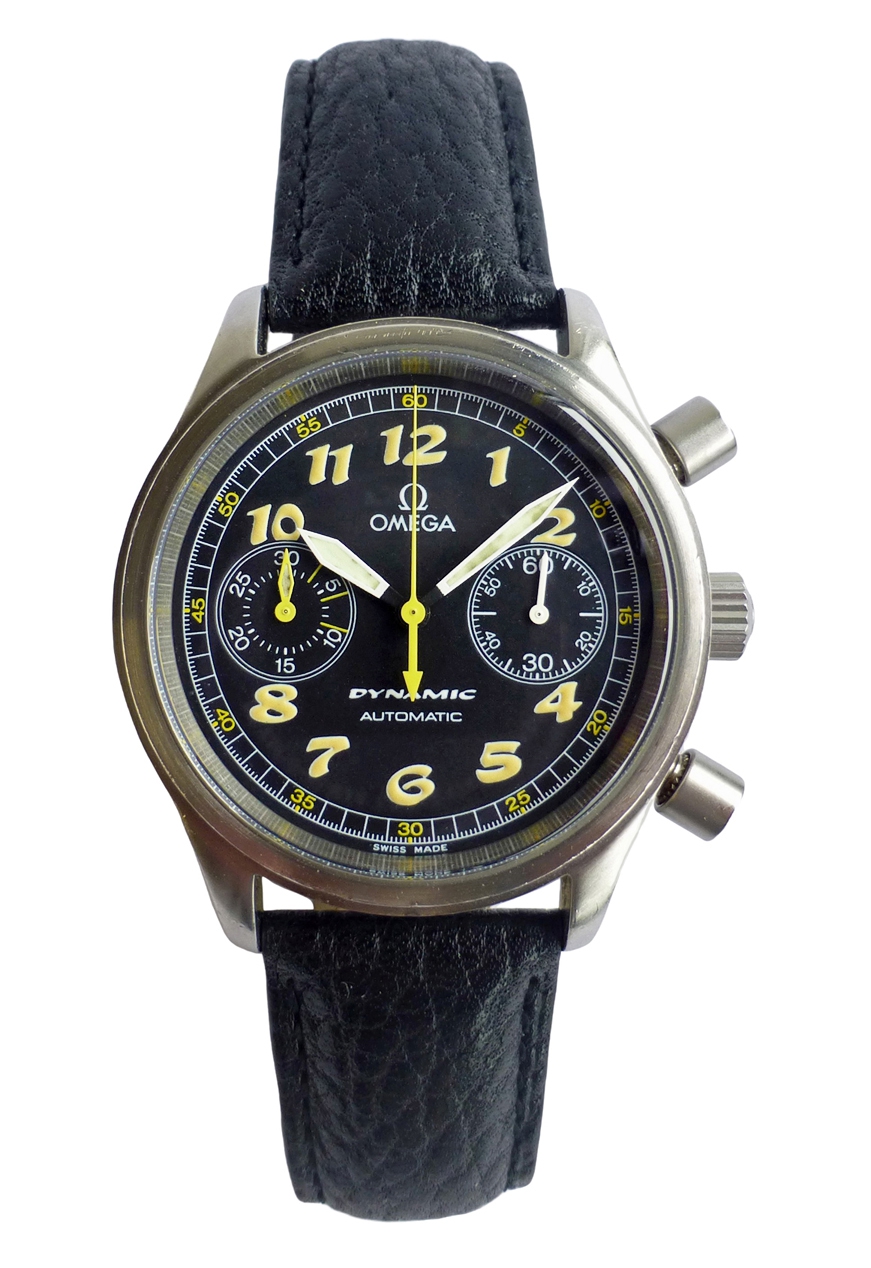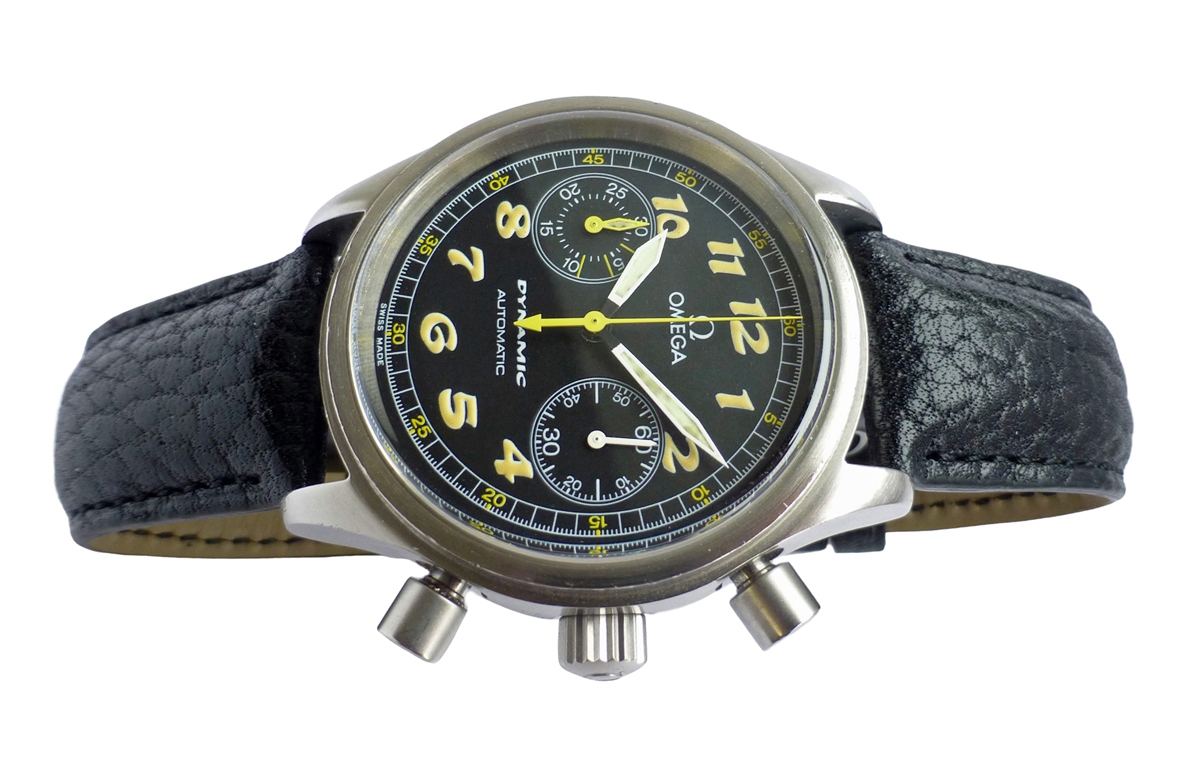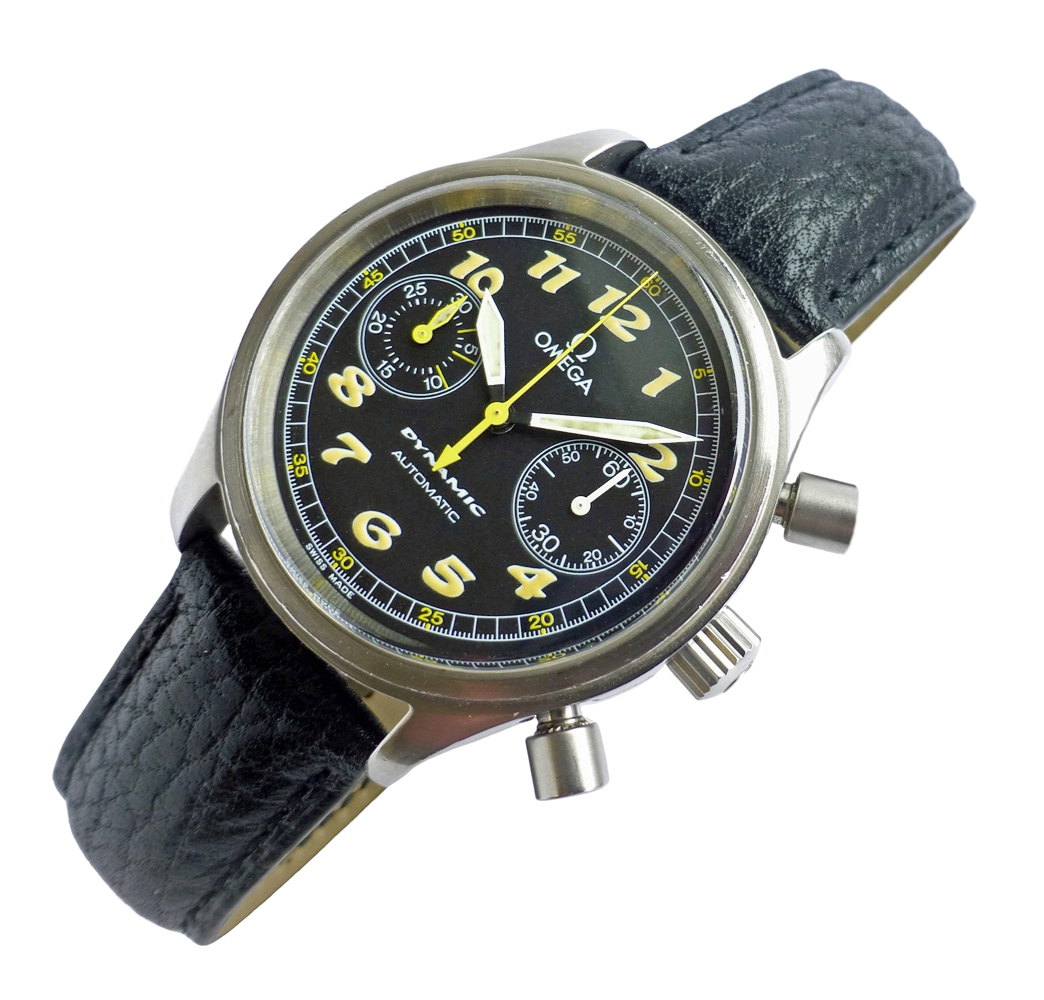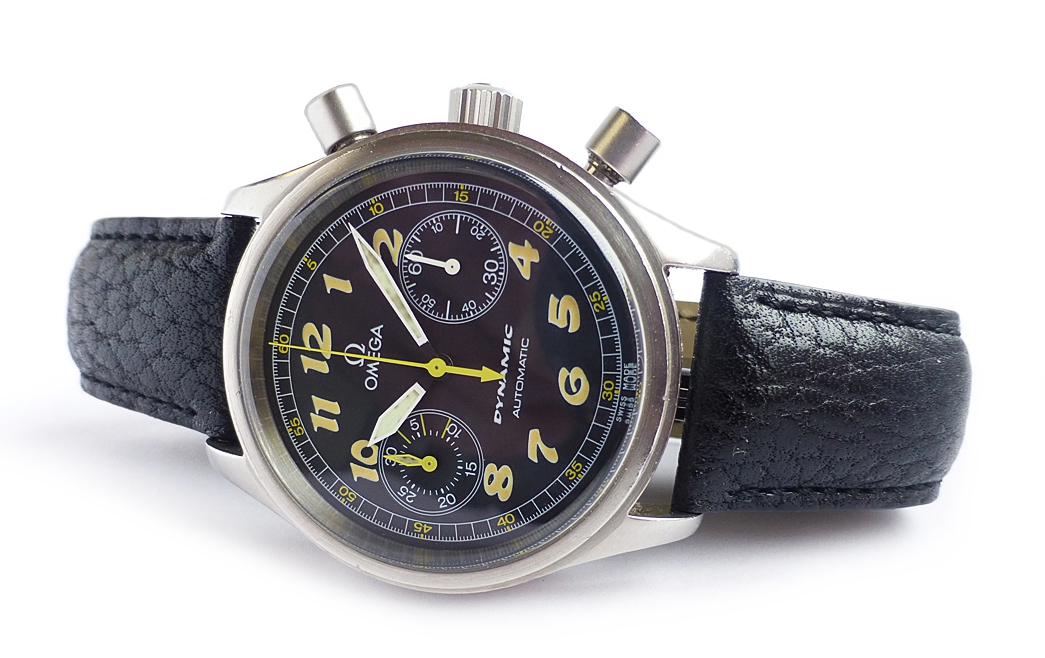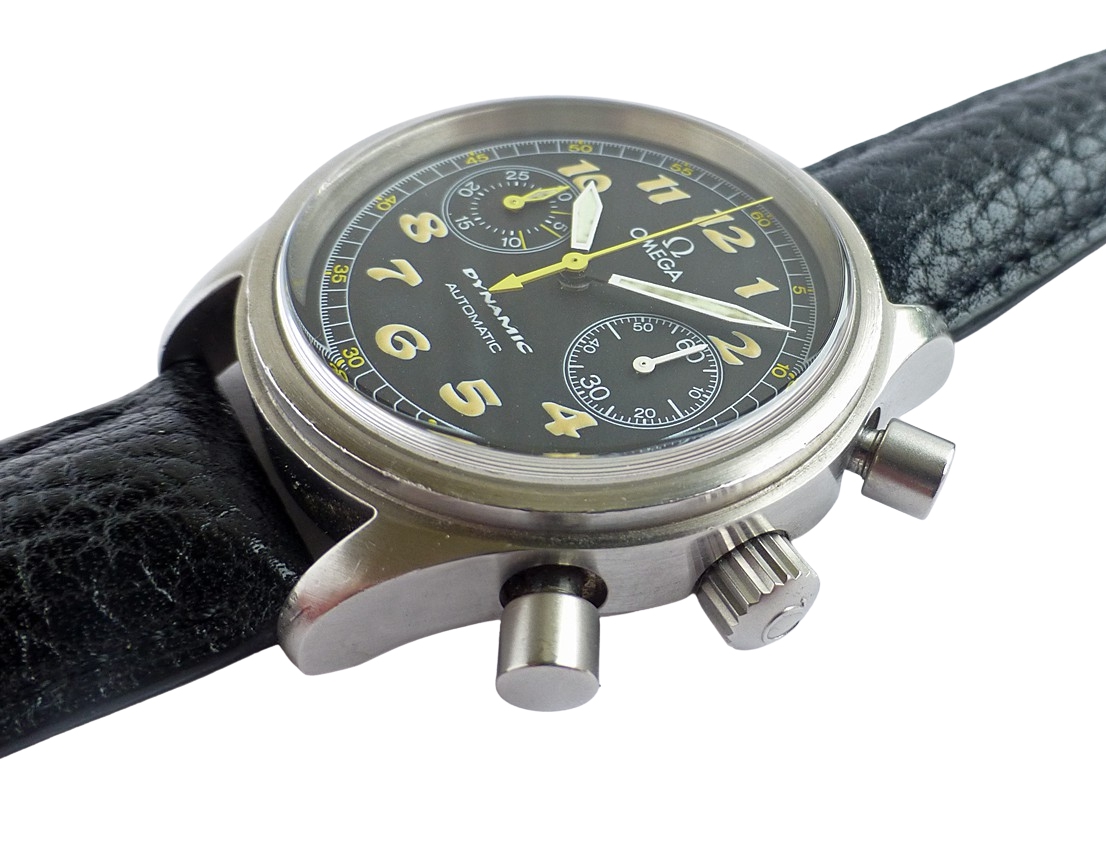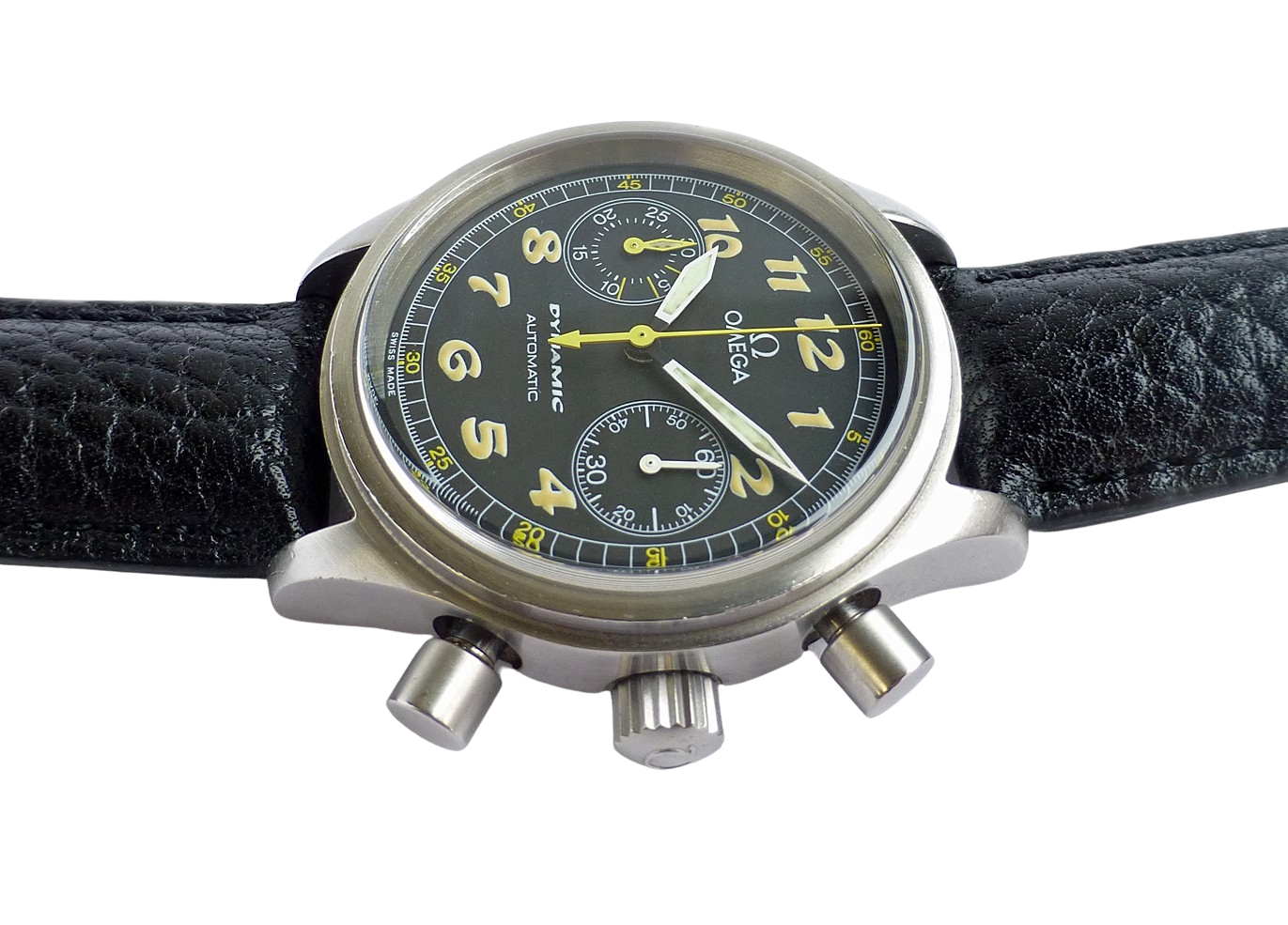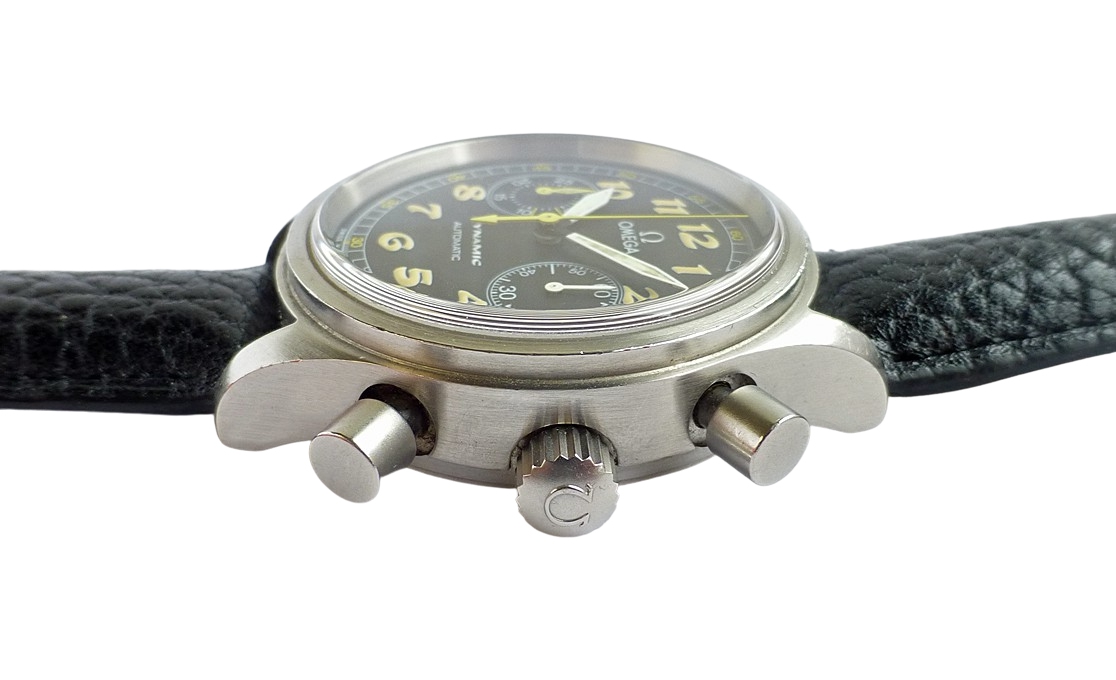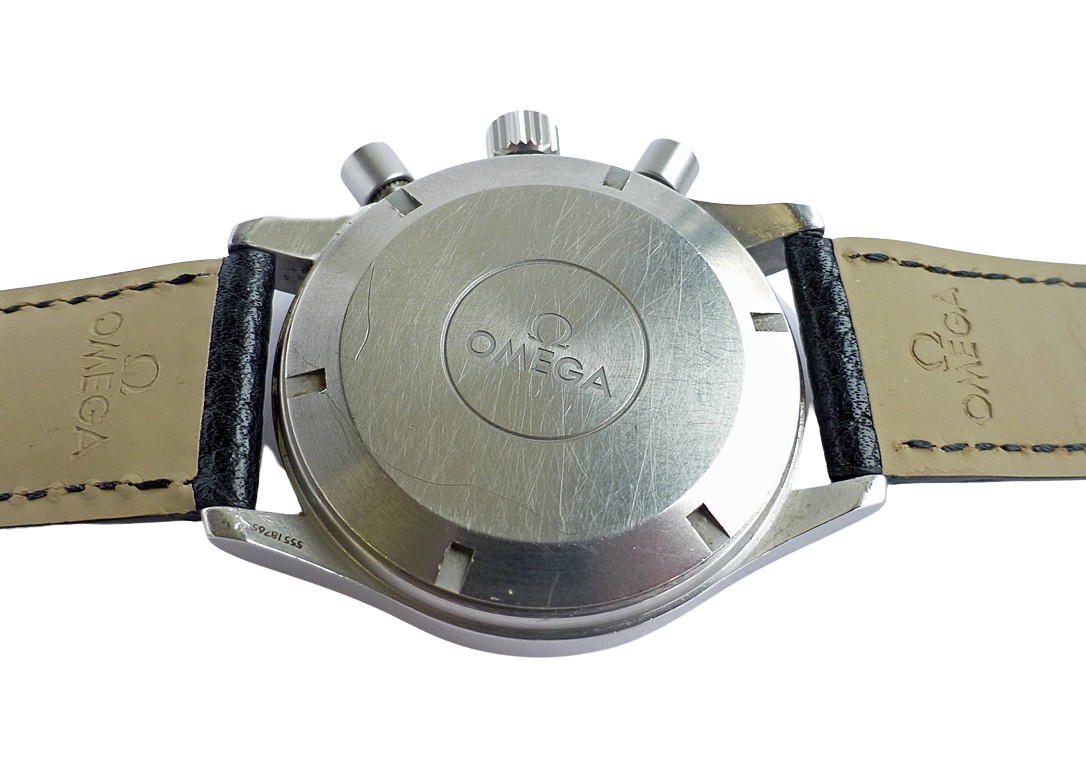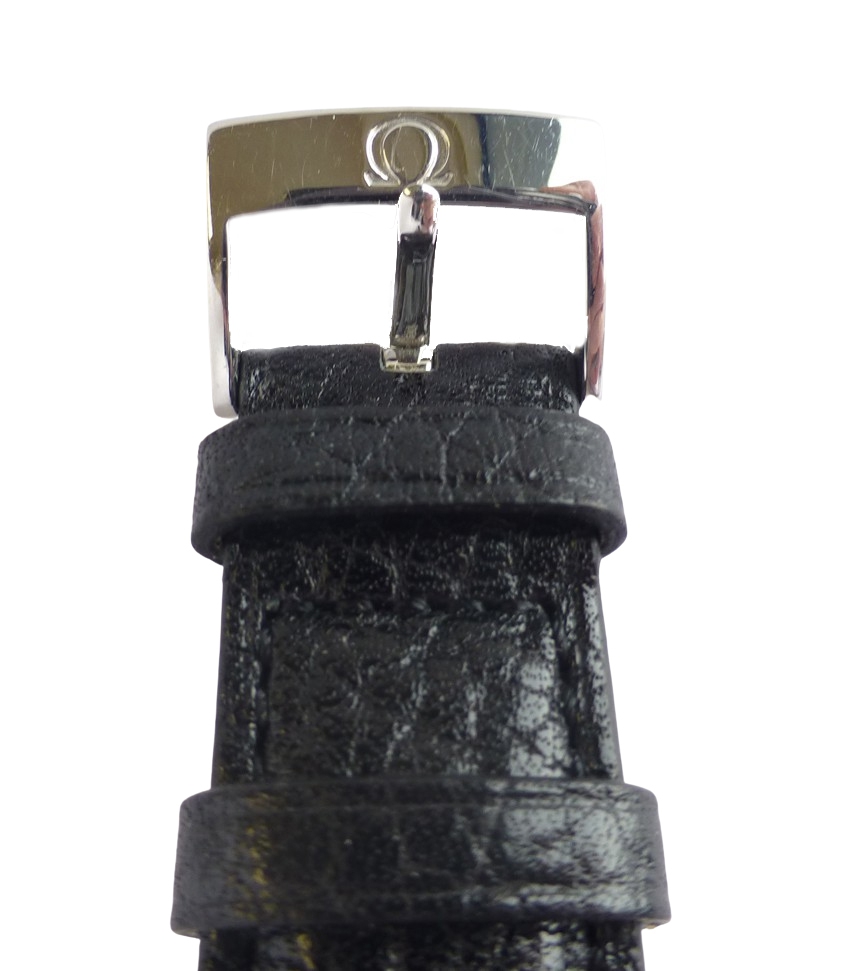Omega Omega Dynamic Automatic Chronograph OME 668
Omega Dynamic Automatic Chronograph
Omega Dynamic automatic chronograph, just serviced and in perfect working condition. Dates to approx 1998. Omega are well known for making innovative and high quality watches and the Dynamic is a very under rated Omega watch. It comes on a brand new Omega strap with Omega pin buckle. Usually an automatic chronograph is a three register watch, and it is the hand wound chronographs with the sub dials at 3 and 9. Omega have an adapted automatic movement to make this in the traditional style two register chronograph but with an automatic movement which is an Omega calibre. 1138. t has a lovely brushed stainless steel case which is large and thick. It also has a large winding crown with large thick extended two piece pushers. The case has a screw back which is signed as is the screw down crown. It has a scratch resistant sapphire crystal and comes on the original Omega signed bracelet. It has a mat black dial with luminous markings and the chronograph hands and some of the dial markings are in yellow. The subsidiary seconds are at 3, the thirty minute elapsed timer is at the 9 position and the sixty second chronograph elapsed timer is the large yellow sweep hand. There are a few marks to the case, but not altogether significant. Width is 38 mm excluding crown, 42 mm including crown, Lug to lug is 45 mm, Thickness is 12 mm
Model Reference 5290.50.40
Case material Stainless steel
Cast Type Vintage watch watchcase type Screw‑in case back
Crown Screw down
Crystal Sapphire
Dial Black
Numerals Arabic
Features 2 register Chronograph
Strap Omega Leather
Buckle Omega pin buckle
Movement Automatic (mechanical) Omega Caliber number 1138
Water resistance 50 meters (not tested)
Key Characteristics
Additional Product Details
Omega Watches. Founded at La Chaux-de-Fonds, Switzerland in 1848 by 23-year-old Louis Brandt who assembled key-wound precision pocket watches from parts supplied by local craftsmen. He travelled throughout Europe selling his watches from Italy to Scandinavia by way of England, his chief market. After Louis Brandt's death in 1879, his two sons Louis-Paul and Cesar, troubled by irregular deliveries of questionable quality, abandoned the unsatisfactory assembly workshop system in favour of in-house manufacturing and total production control. Due to the greater supply of manpower, communications and energy in Bienne, the enterprise moved into a small factory in January 1880, then bought the entire building in December. Two years later the company moved into a converted spinning-factory in the Gurzelen district of Bienne, where headquarters are still situated today. Their first series-produced calibres, Labrador and Gurzelen, as well as, the famous Omega calibre of 1894, would ensure the brand's marketing success. Louis-Paul and Cesar Brandt both died in 1903, leaving one of Switzerland's largest watch companies - with 240,000 watches produced annually and employing 800 people - in the hands of four young people, the oldest of whom, Paul-Emile Brandt, was not yet 24. Considered to be the great architect and builder of OMEGA, Paul-Emile's influence would be felt over the next half-century. The economic difficulties brought on by the First World War would lead him to work actively from 1925 toward the union of OMEGA and Tissot, then to their merger in 1930 within the group SSIH, Geneva. Under his leadership, then that of Joseph Reiser beginning in 1955, the SSIH Group continued to grow and multiply, absorbing or creating some fifty companies. By the seventies, SSIH had become Switzerland's number one producer of finished watches and number three in the world. Weakened by the severe monetary crisis and recession of 1975 to 1980, SSIH was bailed out by the banks in 1981. Switzerland's other watchmaking giant ASUAG, principal producer of movement blanks and owner of the Longines, Rado and Swatch brands, was saved in similar fashion one year later. After drastic financial cleansing and a restructuring of the two groups' R&D and production operations at the ETA complex in Granges, the two giants merged in 1983 to form the Holding ASUAG-SSIH. In 1985 the holding company was taken over by a group of private investors under the strategy and leadership of Nicolas Hayek. Immediately renamed SMH, Société suisse de Microélectronique et d'Horlogerie, the new group achieved rapid growth and success to become today's top watch producer in the world. Named Swatch Group in 1998, it now includes Blancpain and Breguet. Dynamic and flourishing, OMEGA remains one of its most prestigious flagship brands

